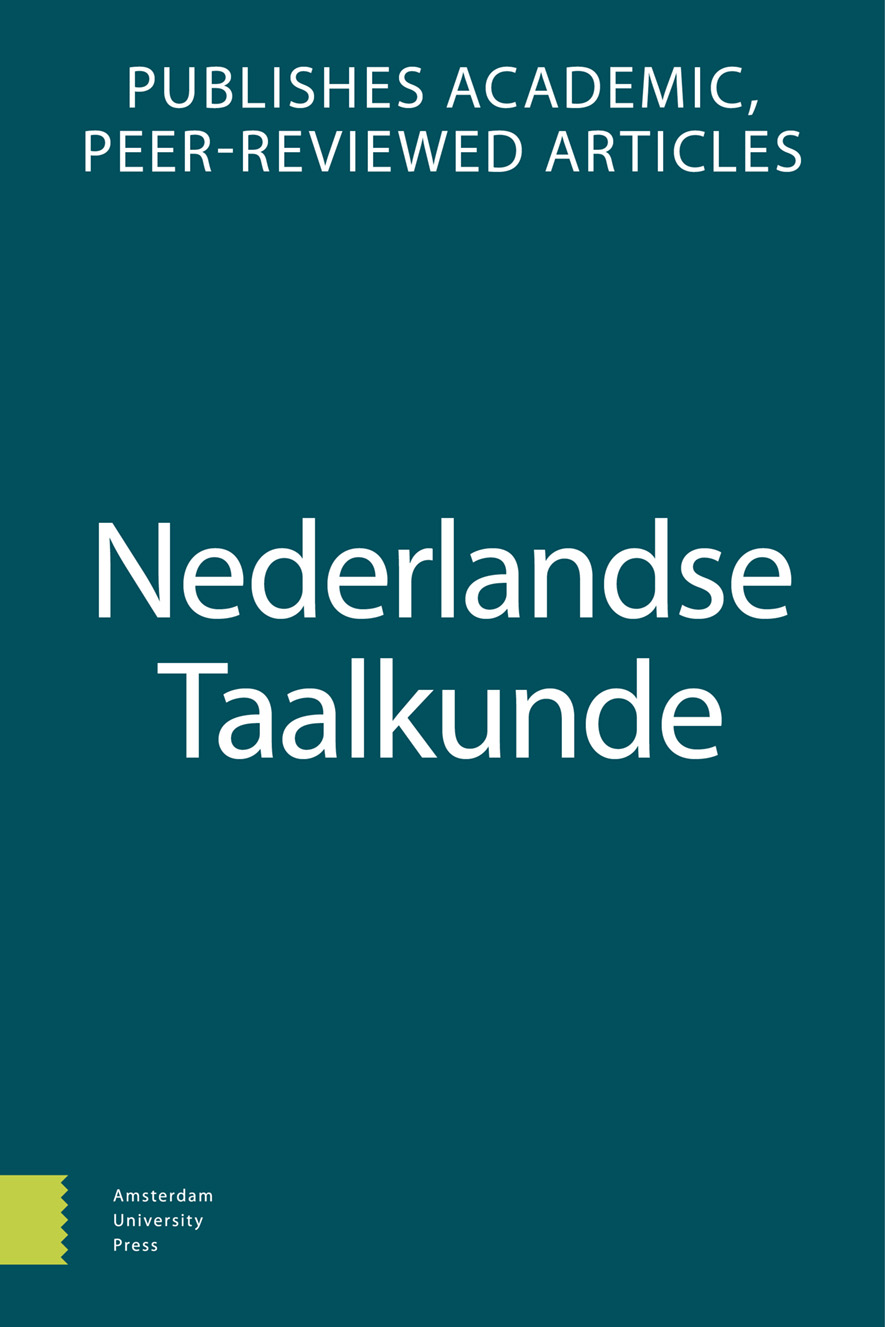- Home
- A-Z Publications
- Nederlandse Taalkunde
- Previous Issues
- Volume 14, Issue 2, 2009
Nederlandse Taalkunde - Volume 14, Issue 2, 2009
Volume 14, Issue 2, 2009
Language:
English
-
-
Paden van paradigmatische vereenvoudiging - Morfologie, fonologie of pragmatiek?
More LessThe Dutch dialects display massive variation in their verbal paradigms. Traditionally, this variation has been explained as the result of developments in phonology, such as deletion of inflectional endings such as schwa, –t and –n, and pragmatics, such as the replacement of the 2sg. pronoun du with the honorific jij, which caused the s-ending to disappear. More recently, it has been proposed that morphology, more specifically pa Read More
-
-
-
De imperativische infinitief in het Nederlands - Een corpusgebaseerde benadering
More LessThis paper is a corpus-based investigation of the imperatival infinitive in Dutch. It offers an analysis of the distribution and the frequency of the form in present-day and historical Dutch, with reference to the imperative. It also examines the pragmatic functions that the imperatival infinitive fulfills in contemporary discourse. The prototypical use of the form is defined and compared to the most convincing characterization of its sem Read More
-
-
-
Het middenstuk in stukjes - Een onderzoek op basis van een corpus naar de werkzaamheid van grammaticale en communicatieve woordvolgordeprincipes in journalistieke teksten
More LessBy Jansen FrankIn the comprehensive Algemene Nederlandse Spraakkunst the order of constituents in the so-called middenstuk ‘middle field’ of the clause is obtained from the interaction of three principles: the inherence principle, the left-right principle and the complexity principle. In this contribution I will investigate the strength of these principles by analyzing the order of adjacent constituents in a small corpus of sports reports in new Read More
-
-
-
Scrambling als object shift
More LessThis article argues that certain forms of scrambling of nominal objects should be analyzed in a similar way as so-called object shift in the Scandinavian languages. The differences between the intended form of scrambling and object shift (as well as the differences concerning object shift between the individual Scandinavian languages) will be accounted for by appealing to an optimality-theoretic evaluation of the outp Read More
-
Most Read This Month
Article
content/journals/13845845
Journal
10
5
false
en

Most Cited Most Cited RSS feed
-
-
Goed of fout
Authors: Hans Bennis & Frans Hinskens
-
- More Less

